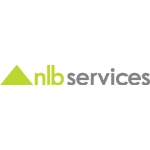© 2025 Next Level Business Services Inc. All Rights Reserved.
Understanding Payroll Structure in India: Components, Benefits, and Compliance
By NLB Services
Payroll is one of the crucial aspects of a company’s internal financial management. It refers to the financial record of payments made by the employer to its employees/ workers, this includes wages, bonuses, salaries, incentives, etc. In an organization’s financial calculations, payroll plays a critical part, in identifying costs and business growth. Preparing timely payroll for employees is mandatory for organizations with respect to multiple statutory compliance requirements.
It is a complex process that involves the calculation of multiple components such as gross salary, bonuses, net salary, daily wages, Provident Fund (PF) payment, professional tax payment, Tax Deduction at Source (TDS), allowances, etc., that are part of each employee’s monthly salary payment. In this blog, we will explore how you can determine what payroll is and its structure, components, benefits, and compliance in India.
Key Components of Payroll in India
Basic Salary
This is the base income that forms the foundation for allowances and other benefits. This ideally constitutes 40 to 50 % of the total salary as per Paisabazaar.
Allowances
Allowances are fully or partly taxable amounts that are paid to the employee as part of their work such as:
Dearness Allowance (DA)
Dearness allowance is paid to help combat inflation, this is especially given to public sector employees. Applicable to central or state government employees, a fixed percentage is determined by the government and is added to the payroll structure. This is around 20% of the basic salary.
House Rent Allowance (HRA)
One of the most common components of workers’ pay packages is the House Rent Allowance (HRA), this allowance, usually 50% of the basic salary, is given by the employer to employees to cover the cost of living. Though not entirely taxable, a portion of HRA is exempted from taxation.
Medical and Travel Allowances
Other taxable or non-taxable allowances include medical allowances, added to cover health insurance. Travel or conveyance allowance is given to the employees to cover their travel expenses incurred for work.
Special Allowances
These are additional allowances provided based on company policy and can include performance bonuses, incentives, and other perks.
Bonuses
Some companies also offer bonuses as part of a performance-based component, which rewards employees for their contribution to the company’s success as perquisites.
Gratuity
Gratuity is another financial component given to employees in India as a token of appreciation for their long-term service or paid at the time of retirement. It falls under the governance of the Payment of Gratuity Act, of 1972. Gratuity is payable to employees who have completed not less than five years of continuous service with the same employee. As per the Gratuity Act of India, an employee, post 5 years working with the company, can avail of gratuity upon retirement, resignation, termination, demise, and layoff due to retrenchment.
Employee Provident Fund (EPF) and Professional Tax
Apart from the components talked about above, the Payroll Structure in India includes certain components that are deducted from your salary for future savings and use, some of these are statutory, meaning that they are legally required and aimed at ensuring compliance with the government.
EPF
Employee Provident Fund or EPF is a welfare program for employees that allows monthly investments by the employer and employee. An organization having more than 20 employees must contribute to EPF. The objective of EPF is to provide financial security to employees for their retirement. The employer’s minimum contribution is 12% of Rs. 15,000 (they can contribute more voluntarily) and that of the employee is 10% to 12% based on their organizational criteria. The EPF amount can be withdrawn upon the end of service with the company or while working in the company. EPF is mandatory for organizations having 20+ employees and for employees whose monthly Basic, DA, and Special allowances come up to ₹15,000.
Professional Tax
Professional tax is part of the payroll structure that is deducted from your gross salary by your employer and is paid to the state government the total amount received on their behalf. As it is a state government-imposed levy, the rates can vary based on your place of residence. The maximum cap on this tax is set at Rs 2500, with its computation being reliant on specific income slabs, which can differ from state to state.
Statutory Deductions and Compliance in Payroll
Certain statutory components are levied by the government in the payroll structure that is important to include from a payroll compliance standpoint.
ESIC (Employee State Insurance Corporation)
ESIC, often known as the Employee State Insurance Corporation, is a social security program designed to help employees. A portion of the employee’s pay is deducted to give them financial and medical assistance. Governed by the ESIC Act of 1948, an organization needs to deduct ESIC if it has ten or more people whose gross monthly salary is less than ₹21,000. The employee’s ESI contribution is 0.75% of gross pay, while the employer’s contribution will be 3.25%.
Here is a list of the benefits that employees get through ESIC:
- Medical benefits: The employee and his family are eligible for complete medical care. There is no limit on how much an insured person or a family member can spend on treatment.
- Sickness Benefits: Insured workers are entitled to sickness benefits in the form of cash compensation at the rate of 70% of the salaries for the periods of certified sickness for a maximum of 91 days per year.
- Maternity Benefits: Maternity Benefits during confinement/pregnancy are payable for twenty-six (26) weeks, with a one-month extension on medical advice, at the full salary rate, subject to payment for 70 days in the preceding two Contribution Periods.
- Other benefits include disablement benefits and dependents benefits. You can read in-depth about ESIC here.
Tax Deduction and Filing
One of the most crucial statutory regulations that every organization must adhere to. Every employee is taxed at a different tax rate based on their salary bracket. TDS or tax deducted at source refers to the collection of tax from the source of an individual’s income. Another part of tax deduction is Income tax, which, on the other hand, is paid by the taxpayer after assessing and calculating their tax liabilities, it is not limited to working employees and every individual who is earning a certain amount, governed by the Income tax act of 1961.
How Payroll Structures Affect Employees
Payroll Structure in India is made up of different income components. This includes basic salary, bonus, gratuity, pension, allowances, etc. The total income of all these components is considered at the salary or the payroll amount. This salary above a certain threshold attracts taxes as per the individual tax slabs.
Some components are taxable while others are exempted, so your take-home salary gets impacted as per the selected salary components. Here are the components that can provide tax benefits and help reduce your tax burden.
Tax-Saving Salary Components
HRA
HRA or House Rent Allowance is given to employees living in rented accommodation. HRA is exempt up to either 50% of the basic salary, or excess of rent which has been paid amounting to over 10% of the basic salary, or the actual HRA you have received.
Provident Fund
PF or provident fund up to 1 lakh or 12% of your salary is exempt from tax, for the contribution made towards provident fund.
Leave Encashment
Leave encashment is a taxable component in the salary structure. However, it is tax-exempt when utilized at the time of retirement. This is applicable to both government and other employees. It is fully exempt for government employees whereas, for other employees, they get the tax exemptions as follows, actual leave encashment received or 10 months average salary or rs 3 lakhs whichever is the amount specified by gov.
Reimbursement of telephone bills
Telephone and internet allowance is now being offered by many organizations as perquisites to their employees to boost productivity and engagement as a part of the employee’s salary. This is an exempted component.
Travel or conveyance allowance
Exempted to the extent of actual travel expenses incurred on a tour, cost of travel on tour, or while on a transfer to another city, state, or even country.
Free meals
Coupons or meal vouchers are another component that helps you save on your taxes. Many companies are offering this component to their employees in an attempt to help them save tax.
Dearness allowance
This is generally added as a part of the employee’s retirement benefits and helps in the reduction of the overall tax liability.
Conclusion
Having the knowledge of the complexities of payroll structure in India can be vital for both employers and employees looking to hire and work in India. This gives an added advantage by ensuring accurate financial management, compliance with statutory requirements, and maximizing the benefits for employees, thus enhancing the overall experience of the employees.
With a clear understanding of the components like basic salary, allowances, bonuses, and statutory deductions such as EPF and professional tax, organizations can facilitate a transparent and efficient payroll system. In this blog, we also talked about the major payroll components and which components can help employees have tax-saving opportunities. Ultimately, a well-structured payroll system helps in effective payroll management and statutory compliance within an organization. Feel free to explore our other blogs on payroll and recruitment here.
Talent Solutions








